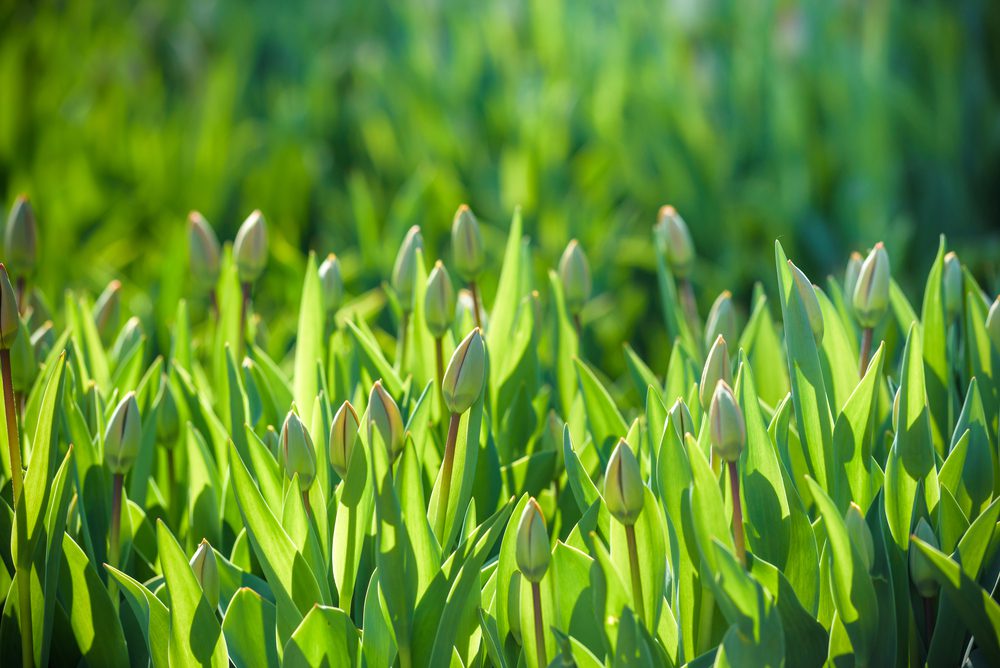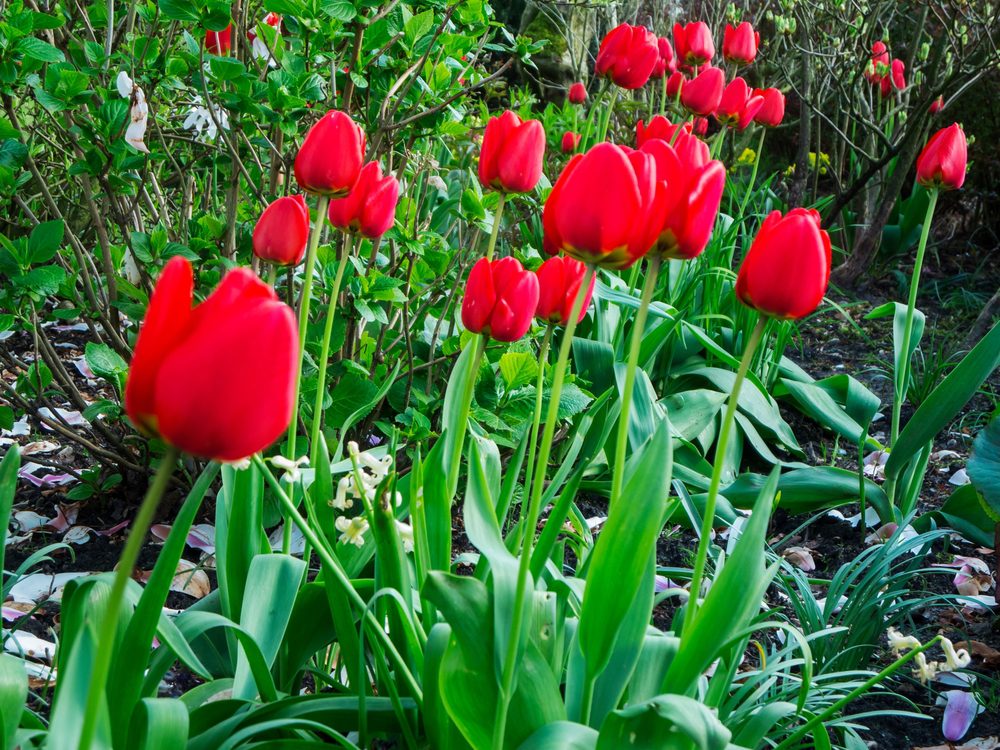Some of the best flowers come from spring bulbs! Daffodils, tulips, crocuses, hyacinths, and alliums are examples of the types of flowers that are produced from bulbs.
Timing is important when it comes to planting. Choosing the wrong time could lead to bulb failure.
The professionals at Platt Hill Nursery are happy to help and can answer your questions about when to plant spring bulbs. We sell bulbs, perennials, annuals, and a range of midwest flowering trees and shrubs to make your garden beautiful.
We also provide customer support and answer customer questions about all the plants we sell. Here’s what you need to know about when to plant spring bulbs.
Key Takeaways
- Spring flowering bulbs are planted in the fall, about six to eight weeks before the ground freezes. In the Chicago area, that’s late September and early October.
- Flowering bulbs must be stored properly when not in the ground. They should be stored in a cool, dark, dry location.
- Healthy bulbs are firm and weighty. Bulbs that are soft, light and flaky, smell bad, or mushy should not be planted.
When To Plant Bulbs
The time to plant spring flowering bulbs is in the fall! This is because bulbs need time to settle in the ground, freeze, and then thaw in order to grow. The cooling period is important for starting the growth process.
We recommend planting your bulbs in the ground in late September or early October, as this will give them several weeks to settle before the ground freezes. Avoid planting bulbs in a waterlogged location, as excessive water can cause your spring bulbs to rot in place. If possible, choose a time to plant when the weather is cool and the ground is not too wet.
Bulbs To Plant for Spring Blooming
There are many types of bulbs that you can plant for spring blooming. Some examples of these plant types include:
Crocuses. Crocuses are early spring blooming flowers. They produce yellow, white or purple blossoms with yellow insides. These dainty bulbs produce flowers that are about 5 to 6 inches tall. Often, you will see the first crocuses growing when snow is still on the ground.
Snowdrops. Snowdrops produce flowers that are 6 to 12 inches long. These flowers open pointing toward the ground. As the name implies, snowdrops are flowers that open up early – even earlier than crocuses.

Grape hyacinth. Just as you might expect, grape hyacinths produce blossoms that look like clusters of grapes. These delicate flowers are approximately 6 to 12 inches tall and bloom in midspring.
Fritillaria. This plant is in the lily family and produces striking flowers that can be anywhere from 6 inches to 3 feet tall. Fritillaria is both exotic looking and unusual, bringing a touch of something different to your garden.
Daffodils. Daffodils are classic spring flowers that can be anywhere from 14 to 24 inches tall, with yellow or yellow and white flowers. These trumpet shaped blossoms signal the beginning of spring in many areas and are a favorite for decorating tables and bouquets.
Tulips. Tulips are another spring favorite. These simple, elegant flowers come in almost as many colors as there are in the rainbow. Tulips are listed as early, mid or late season on their packaging, so you can choose the time that works best for your landscape.
Irises. Irises bloom in late spring or early summer. These classic bulb flowers produce complex blossoms that come in a range of colors, although purple irises are the most popular.
Alliums. Allium flowers, also called ornamental onions, range in height from 3 inches to 2 feet tall. These blossoms are large and spherical. They come in colors ranging from purple, white, and pink.
When To Plant Daffodil Bulbs
Plant your daffodil bulbs starting in late September or early October. Choose a day when the weather is cool and the evenings have been dropping into the 50’s or 40’s.
Plant daffodil bulbs in well-draining soil in a location where the flowers will get at least 6 hours of direct sun each day. A good rule of thumb for planting bulbs is to plant the bulb at three times the size of the bulb. For example if the bulb is 2 inches tall, you would plant it 6 inches deep.
When To Plant Tulip Bulbs
Plant your tulip bulbs starting in late September or early October, at a time when the temperature at night is in the 40’s or 50’s on a regular basis. Plant your tulip bulbs in a location where the soil drains well and is not routinely waterlogged.
Place bulbs in the ground with the pointed end facing up. Bulbs should be placed in the ground in holes 8 inches deep. For best effect, cluster tulips together in groups of 10 or more.

Bottom Line
Spring bulbs like tulips, daffodils, alliums, snowdrops and crocuses are classic flowers that add cheer to your garden.
If you want color in your garden throughout the entire spring and into the summer, choose a range of bulbs and perennials that flower at different times. For example, plant crocuses for early blooming, tulips for mid-spring blooming and late-spring irises to ensure that your garden is beautiful throughout the season.
Want more information about maintaining a beautiful garden in the spring? See our spring guide to lawn care or stop by the Platt Hill Nursery for some beautiful annuals.
But if you want bulbs to grace your garden with beautiful blooms next spring, set your calendar to watch the arrival of spring blooming bulbs, in Platt Hill Nursery around Labor Day. Platt Hill Nursery sells a range of products to make your garden beautiful all year round.


